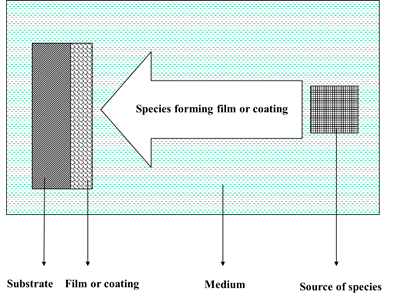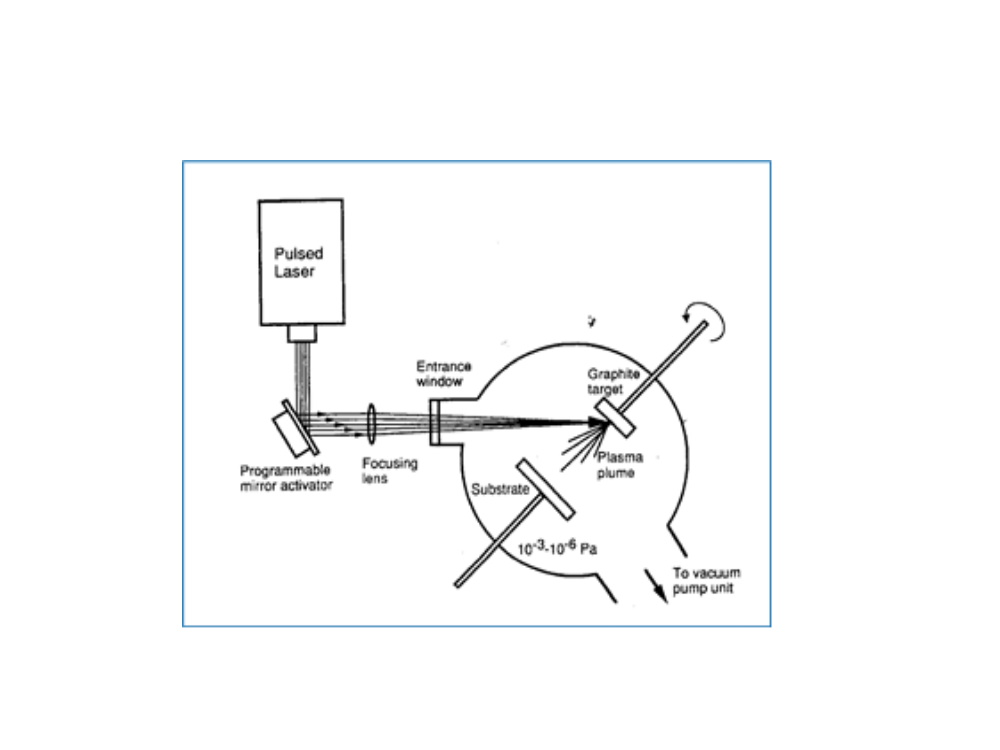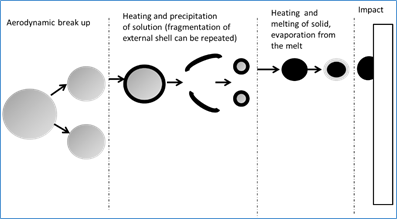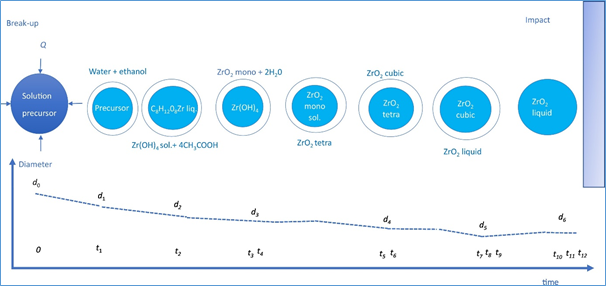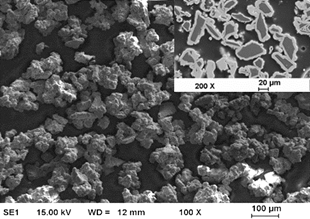The modern methods of films and coatings deposition find many new application in industry and technology. The methods are mainly physical and categorized by the species participating in deposits build-up as: (i) atomistic; (ii) granular; and (iii) bulk. The examples of emerging methods developed by the author and belonging to each category are briefly discussed.
- thin films
- thick coatings
- physical methods of films coating deposition
1. Biography
Lech Pawłowski is at present emeritus Professor at The University of Limoges in France. He has been active in industry and academia in the field of surface engineering. Author and co-author of more than 1430 scientific papers, 3 books and 3 books chapters and Hirsch factor of his publication is h=4031.The detailed CV is on the website [1].
2. Content
The films and coatings enable a flexible application of different materials for industrial applications. Their field of applications are wide starting from microelectronics, machine building up to medicine. The entry concentrates on films and coatings generated in physical way being initiated by a source of the species forming the deposits (atoms, molecules, and particles,.). These species are transported through a medium to a substrate as shown in Figure. 1.
Figure 1.Fig. 1 Sketch of a physical deposition process [1][2]
The term “physical deposition” would relate to physical nature of generation the constituent species from source. This mechanism of such generation can be [2][3]:
- evaporation of solid sources in thermal evaporation;
- ejection of species by energetic ions in sputtering;
- laser ablation in the pulsed laser deposition ;
- injection of reacting gaseous precursors in chemical vapor deposition;
- injection of solid (powder particles) or liquid (suspension, solution) feedstock in thermal spraying;
- Injection of powders particles in bulk methods.
The major deposition techniques, categorized by size of species used in their build-up and the: (i) medium in which they are transported in atomistic films; (ii) feedstock used in granular coatings; and, (iii) way of substrate melting in bulk coatings are shown in Table 1.
Table 1.Table 1 Main physical deposition methods [2][3].
|
Atomistic |
Granular |
Bulk |
|||
|
Inert medium |
Pulsed laser deposition (PLD) |
Solid feedstock |
Flame spraying |
Arc melting of substrate |
Plasma transferred arc (PTA) |
|
Evaporation |
Arc spraying |
Laser melting of substrate (with or without pre-deposited coating) |
Cladding |
||
|
Reactive medium |
Evaporation in reactive atmosphere |
Atmospheric plasma spraying |
Laser surface alloying |
||
|
Chemical vapor deposition |
High velocity oxy-fuel spraying |
Hard phase dispersion |
|||
|
Atomic layer deposition (ALD) |
|||||
|
Plasma |
Sputtering |
Detonation spraying |
|||
|
Ion plating |
Vacuum plasma spraying |
||||
|
Plasma enhanced chemical vapor deposition |
Liquid feedstock |
Suspension plasma spraying |
|||
|
Solution precursor plasma spraying |
|||||
|
Spray pyrolysis |
|||||
An important issue is the adaptation of coating to a substrate. Such adaptation can be made by the functionally graded coatings [3][4].
The detailed description of each method of film and coating preparation can be found elsewhere [1][2][2-3] and only a few emerging or growing up techniques will be discussed here. Among the atomistic methods, an important one is pulsed laser deposition shown in Figure. 2. The technique uses the pulsed laser having short wavelength (e.g. 200 to 400 nm in excimer lasers) and the emitted photons generates vapors diffusing to the substrate and forming film. The pulsed character of laser radiations generates plasma and the mechanism of target ablation consist of very rapid heating which is useful to deposition films of materials which decomposes easily such as YBa2Cu3O7-x or Ca10(PO4)6(OH)2 oxides [4][5].
Figure 2Fig. 2 Sketch of PLD system [4][5].
An emerging atomistic method enabling very thin films to be obtained is atomic layer deposition reviewed in [5][6]. This process uses precursors in gaseous phase, which are introduced in a pulsed way and react on the substrate at moderate temperature lower than 623 K. The reaction chamber is purged after each pulse and their number determines the film thickness. The method is applied in microelectronics or energy storage.
The granular methods of coatings deposition and, in particular, thermal spraying are reviewed thoroughly elsewhere [6][7]. The new method on this field is suspension precursor plasma spraying (SPPS) which uses liquid chemical precursor which are injected and transforms in the plasma jet before and impact with the substrate as shows Figure. 3.
Figure 3Fig. 3 Behavior of a solution droplet in a high-temperature gas [7][8].
The phenomena occurring during the flight of a droplet are very complex. An example of a behavior of a solution in water and ethanol solution of zirconium acetate Zr(C
The phenomena occurring during the flight of a droplet are very complex. An example of a behavior of a solution in water and ethanol solution of zirconium acetate Zr(C
2
H
3
O
2
)
4
and yttrium nitrate Y(NO
3
)
3 leading to a formation of liquid zirconia is shown in Figure 4.
leading to a formation of liquid zirconia is shown in Fig. 4.
Figure 4. Phenomena occurring after injection of a solution in water and ethanol of zirconium acetate with zirconium nitrate [8].
Fig. 4 Phenomena occurring after injection of a solution in water and ethanol of zirconium acetate with zirconium nitrate [9].
The SPPS coating may have a columnar microstructure and their application to produce thermal barrier coatings instead of used at present in industry electron beam physical vapor deposition motivates a lot of research [9][10].
Finally, the bulk coatings are very useful in manufacturing of thick composite (typically metal matrix composites, MMC) coatings in which the hard reinforcement particles are injected into a melt-pool formed in a metallic substrate by a transferred arc or by a laser beam. As the ceramic particles are in contact with liquid metal or alloy an important issue is wetting which is poor for oxide particles into an alloy. This may lead to the agglomeration of oxide particles in the composted observed e.g. in [10][11]. The phenomena occurring in contact between molten metallic substrate and solid ceramic particles was recently analyzed [11][12]. A possibility of cladding of ceramic particles by a metallic layer shown in Fig. 5 is a possibility to improve the homogeneity of the composite microstructure.
Figure 5Fig. 5 Alumina particles cladded with nickel layer by a hydrogen reduction method [12][13].
The metal matrix composite obtained by plasma or laser assisted bulk coatings are frequently used against wear in machine building.
4. Conclusions
The modern methods of films and coatings deposition find many new applications in industry and technology. A few examples of these methods developed by L. Pawłowski with his collaborators and students are shortly presented.
Bibliography
- https://encyclopedia.pub/724 checked on 5 December 2020
- Pawłowski, Dépôts Physiques, PPUR, Lausanne, Switzerland, 2003
- Pawłowski, Physical Deposition Methods of Films and Coatings, Wiley, Chichester, U.K., in preparation
- https://encyclopedia.pub/2082 checked on 5 December 2020
- Pawłowski and P. Blanchart, Industrial Chemistry of Oxides for Emerging Applications, Wiley, Chichester, U.K., 2018.
- W. Johnson, A. Hultqvist, and S.T. Bent, A brief review of atomic layer deposition from fundamentals to applications, Materials Today 17 (5) (2014) 236-46.
- Pawłowski, The Science and Engineering of Thermal Spray Coatings, Wiley, Chichester, U.K., 2008.
- Pawłowski, Application of solution precursor spray techniques to obtain ceramic films and coatings, [in:] Future Development of Thermal Spray Coatings, N. Espallargas, (ed.), Woodhead, Cambridge, U.K., 2015, 123-41.
- Tobon Valencia, L. Pawłowski, G. Lecomte-Nana, C. Constantinescu, and B. Pateyron, Preliminary analysis of physical and chemical phenomena occurring in droplet at solution precursor plasma spraying of zirconia coatings, Surf. Coating. Technol. 397 (2020) 126059.
- Pawłowski, Suspension and solution thermal spray coatings, Surf. Coating. Technol. 203 (19) (2009) 2807-29.
- Demian, A. Denoirjean, L. Pawłowski, P. Denoirjean, and R. El Ouardi, Microstructural investigations of NiCrAlY + Y2O3 stabilized ZrO2 cermet coatings deposited by plasma transferred arc (PTA), Surf. Coating. Technol., 300 (2016), pp. 104-109.
- Oukach, B. Pateyron, and L. Pawłowski, Physical and chemical phenomena occurring between solid ceramics and liquid metals and alloys at laser and plasma composite coatings formation: A review, Surf. Sci. Reports, 74 (3) (2019) 213-41.
- Winnicki, S. Kozerski, A. Małachowska, L. Pawłowski, and M. Rutkowska-Gorczyca, Optimization of ceramic content in nickel –alumina composite coatings obtained by low pressure cold spraying, Surf. Coating. Technol., accepted for publication on 3 December 2020.

